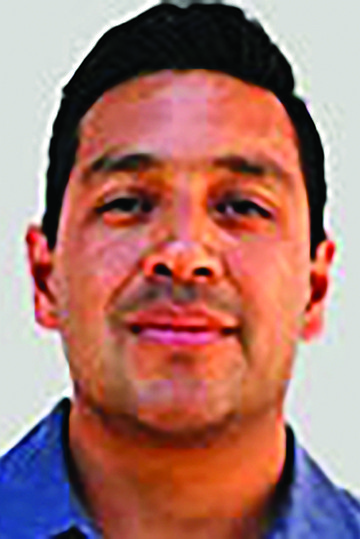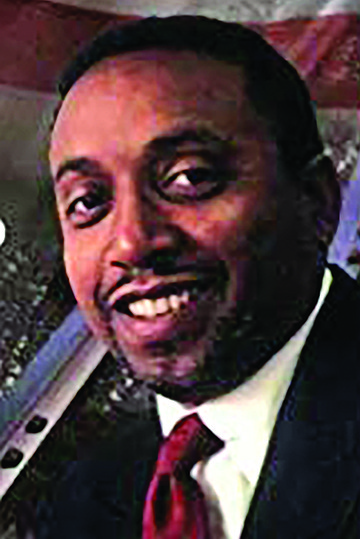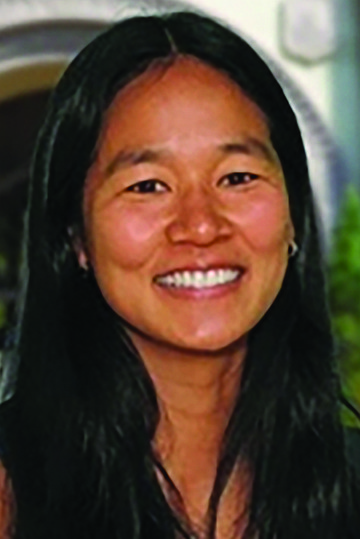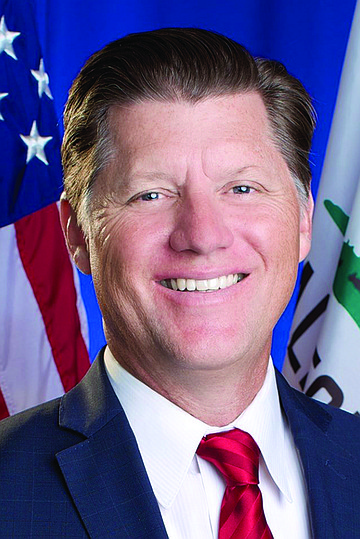 Facebook
Facebook
 X
X
 Instagram
Instagram
 TikTok
TikTok
 Youtube
Youtube

On September 24 the San Diego Unified school board passed a resolution in support of a state bill (AB 331) that would add one semester of ethnic studies to California public high school graduation requirements and would extend all state graduation requirements to charter schools.

The board already passed its own requirement for San Diego Unified high school students. On September 10, Superintendent Cindy Marten announced students who start high school next fall (the class of 2024) will be required to take ethnic studies to graduate, one year sooner than AB 331 would require, if passed. Marten expressed her support for the state’s effort to create an ethnic studies model curriculum, which was stalled in August after the first draft was accused of spreading hate and political indoctrination.

Over the summer, the California Department of Education posted a 300-page draft for public review. It includes lessons about the immigration of various ethnic groups to America and the discrimination many experienced, including 55 pages with intermingled lessons on Arab Americans and Muslim Americans.

On July 29, the all-Democrat, 16-member California Legislative Jewish Caucus issued a letter to the state’s Instructional Quality Commission, which oversees curriculum development, condemning the draft for “anti-Jewish bias.” The draft only mentions one Jewish American immigrant (“Lionel Cohen and his famous Lionel toy trains”) and tells his story in one quarter of a sentence. In one other place the word “Jews” is mentioned, but only in reference to one of three religions in a two-page lesson on Arab immigration. The political movement to boycott, divest, and sanction Israel is emphasized, but there is no mention of the Holocaust. Islamophobia is mentioned 60 times and is discussed at length. Anti-semitism is mentioned once but is not discussed. The caucus complained, “This glaring omission is deeply troubling, especially against the backdrop of a recent surge in violent anti-semitic incidents.”

On April 27 in Poway, 19-year-old white supremacist John T. Earnest opened fire inside Congregation Chabad, an Orthodox Jewish synagogue, killing one worshipper and injuring three others, including a rabbi. A half hour before his attack Earnest posted an “open letter” to the internet expressing his desire to kill all Jews and his belief in anti-semitic propaganda he found online.
On August 29, the Anti-Defamation League in San Diego reported two bullets had been shot into the building of Del Cerro’s Temple Emanu-El, a Reform Jewish synagogue. According to the League, anti-semitic incidents in California rose 27 percent in 2018. And as the Reader reported in May, 58 percent of anti-religious hate crimes in America in 2017 targeted Jews, according to the FBI.

Yet the word anti-semitism is excluded from the curriculum’s glossary of terms, which includes words such as androcentric, cisheteropatriarchy, nepantla, hxrstory, xenophopia, intersectionality, homophobia, transphobia, Islamophobia, whiteness, and white supremacy. (Some of these can’t be found in a dictionary.)
The caucus further complained the curriculum would “institutionalize the teachings of anti-semitic stereotypes in our public schools.” After condemning dozens of negative stereotypes about Arab Americans and Muslim Americans the curriculum endorses a “classic anti-semitic trope about Jewish control of the media” and does not condemn any anti-semitic stereotype.

The alleged anti-semitic trope is found in “Somos Sur” (We are the South,) a rap song by French-Chilean Ana Tijoux and British Palestinian Shadia Mansour that is quoted in its entirety in the curriculum. One of Mansour’s Arabic lines is translated as saying Israelis “use the press to manufacture.” The song casts a vision of a divided world that pits “greater Syria, Africa, and Latin America” with Palestine against America, Israel, and the former “French, English and Dutch” colonial powers.
In the music video for the song, Tijoux wears a shirt with an illustration of a woman wearing a headscarf and holding an AK-47. The shirt reads, “Resistance is not terrorism.” Mansour’s Facebook cover photo shows small Palestinian children with their faces covered by scarves. One is pulling back on a slingshot.
“It is difficult to fathom why... the state of California would want to actively promote a narrative about Jews that echoes the propaganda of the Nazi Regime,” the caucus stated. (In Earnest’s homicidal letter he expressed the same stereotype. He blamed “every Jew... for lying and deceiving the public through their exorbitant role in the news media.”)
Kyle Weinberg is a Jewish educator within San Diego Unified and is a member of its ethnic studies advisory committee. He says, “My grandfather fought [along] with the Anti-Defamation League to integrate country clubs in L.A. that excluded Jewish people and people of color, and I was the target of anti-semitic insults in elementary school. Nevertheless, conflating the experience of white Jewish people in the US with that of people of color minimizes the pernicious effects of systems of oppression that continue to deny opportunities to marginalized communities.”
He did not reply to give an example of a system of oppression. He says a grassroots movement for ethnic studies started in the 1960s and the focus has always been on Black, Latino, Asian American, and Indigenous communities. He points to a petition he signed that says the history of these groups has been erased and misrepresented in other curricula.
He didn’t explain how the large section of Arab Americans and Muslim Americans fits this focus.
Mason Weaver is a former talk show host for several San Diego radio stations, including KOGO, and is a regular guest speaker at the Content of Character Series conferences. As an African American, he says, he is offended when people call him oppressed or marginalized and in need of special help or attention. He says it’s condescending and implies blacks are inferior. He wrote a book titled It’s OK to Leave the Plantation and has a website called leavetheplantation.org.
“White liberals are the new slave masters,” he says. “They have everyone on their own separate plantation. They want black people and other minority groups to be victims.”
He says the indoctrination of minorities to believe they are oppressed is itself a form of oppression and control, and he rejects the idea that systemic racism has continued in America. “If there was a concerted effort by white people to keep black people down you would not know the name Oprah Winfrey. Black people are successful at things we believe we can do. But we are told we are limited in what we can do.”
He says public school teachers psychologically abuse children when they convince minorities they are oppressed and convince whites they are oppressors.
The state curriculum draft stereotypes all non-white people as “oppressed groups.” The glossary’s definition for “whiteness” is “a social construct that has served as the foundation for racialization in the United States. Whiteness is the antithesis of blackness... it separates those who are privileged from those who are not....”
“Whiteness is a make-believe construct,” Weaver says. “It’s racist. Are you telling me that white Germans are the same as white Italians? All day long you have black people and white people getting along until you get home and turn on the news. Reality is not what you see on CNN. It’s what you see every day going to work. We need harmony, not hostility.”
In a September 9 newsletter, University of San Diego Ethnic Studies Department Chair May Fu listed “white terrorism” among a handful of problems ethnic studies helps to solve.
Lincoln High School social studies teacher and San Diego State Professor Dr. Guillermo Gomez was one of the authors of the state draft. And he already teaches his own ethnic studies curriculum at Lincoln. His required textbook is Howard Zinn’s A People’s History of the United States, a book in which the author “plays fast and loose with historical context” in order to support pre-determined conclusions, according to Stanford history professor Sam Wineburg.
Gomez says the state’s curriculum proposal is not anti-semitic but “anti-oppression.” He asks, “Do you think it is a coincidence there are more black and brown folks in prison than higher education? Do you think racial profiling doesn’t exist in our systems of power? Why are more black students suspended from public schools than any other student population?”
He continues, “In education, what is often called the ‘achievement gap’ between students of different racial backgrounds, is re-contextualized by ethnic studies as the opportunity gap, and/or what Gloria Ladson-Billings framed as the education debt in her 2006 presidential address to the American Education Research Association. This debt refers to what students of color in the United States are owed after centuries of educational trauma, dehumanization, and enforced sociopolitical, cultural-historical, economic, and moral constraints via the education system. As a field catalyzed by a righteous angst for justice and access to knowledge (rather than merely ‘closing a gap’) ethnic studies intentionally works toward helping pay this education debt.”
The San Diego Unified plan to implement ethnic studies is titled “Developing Global Citizens.” A section in the California curriculum proposal has American students write out an acknowledgement that they are living on occupied land and has teachers host an event at which students can read their acknowledgements to parents and community members.
Republican State Senator Brian Jones, who represents most of east and northeast San Diego County, says he voted against AB 2016 when he was an assemblymember in 2016. The bill passed into law and requires the state to create this ethnic studies curriculum model. “My concern then was that the curriculum would be politicized and sadly I was right,” he says.
The Democrats in the Jewish Caucus agree, at least in some regard. In their letter they stated the proposed curriculum is an “effort to institutionalize” a “narrow political ideology.” The Los Angeles Times published an editorial joining the bipartisan agreement. “This curriculum feels like it is more about imposing predigested political views on students than about widening their perspectives.”
Jones adds, “The draft curriculum contains a line right out of New York socialist Congresswoman Alexandria Ocasio-Cortez’s playbook when it portrays capitalism — the foundation of our economy — as ‘a form of power and oppression.’”
On August 12 the California State Board of Education rejected the first draft, saying it “falls short” of being “accurate, free of bias, [and] appropriate for all learners in our diverse state…” The board stated, “Ethnic studies can be an important tool to improve school climate and increase our understanding of one another...The current draft model... needs to be substantially redesigned....”
The Jewish Caucus stated the exclusion of Jews and anti-semitism “appears to be intentional and reflects the political bias of the drafters.” Gomez counters that anti-semitism “is embedded and mentioned throughout the curriculum.” He says California Department of Education staff made the final decision on what was posted for public review and that appendixes to the curriculum mention the Holocaust and include a book on the Holocaust in course materials. He points out two additional mentions of Jewish immigrants and one more mention of anti-semitism in the appendixes, but again they are in a list of other things and lack any focus or detail. Gomez doesn’t deny the authors left out anti-semitism from the glossary but says he agrees it should be added.
“It is in the interest of Jewish Americans and communities of color to support each other…99.8% of the document does not deserve to be eliminated because of only 0.2% of the content that encourages research and discussion on a controversial topic,” Gomez says.
AB 2016 requires the state to have a curriculum ready for board consideration by the end of this year. A new bill passed by the state legislature will extend their time by a year if signed into law. That would put the deadline for a second draft at the end of 2020. Jones says he doesn’t think the second draft will change much.


On September 24 the San Diego Unified school board passed a resolution in support of a state bill (AB 331) that would add one semester of ethnic studies to California public high school graduation requirements and would extend all state graduation requirements to charter schools.

The board already passed its own requirement for San Diego Unified high school students. On September 10, Superintendent Cindy Marten announced students who start high school next fall (the class of 2024) will be required to take ethnic studies to graduate, one year sooner than AB 331 would require, if passed. Marten expressed her support for the state’s effort to create an ethnic studies model curriculum, which was stalled in August after the first draft was accused of spreading hate and political indoctrination.

Over the summer, the California Department of Education posted a 300-page draft for public review. It includes lessons about the immigration of various ethnic groups to America and the discrimination many experienced, including 55 pages with intermingled lessons on Arab Americans and Muslim Americans.

On July 29, the all-Democrat, 16-member California Legislative Jewish Caucus issued a letter to the state’s Instructional Quality Commission, which oversees curriculum development, condemning the draft for “anti-Jewish bias.” The draft only mentions one Jewish American immigrant (“Lionel Cohen and his famous Lionel toy trains”) and tells his story in one quarter of a sentence. In one other place the word “Jews” is mentioned, but only in reference to one of three religions in a two-page lesson on Arab immigration. The political movement to boycott, divest, and sanction Israel is emphasized, but there is no mention of the Holocaust. Islamophobia is mentioned 60 times and is discussed at length. Anti-semitism is mentioned once but is not discussed. The caucus complained, “This glaring omission is deeply troubling, especially against the backdrop of a recent surge in violent anti-semitic incidents.”

On April 27 in Poway, 19-year-old white supremacist John T. Earnest opened fire inside Congregation Chabad, an Orthodox Jewish synagogue, killing one worshipper and injuring three others, including a rabbi. A half hour before his attack Earnest posted an “open letter” to the internet expressing his desire to kill all Jews and his belief in anti-semitic propaganda he found online.
On August 29, the Anti-Defamation League in San Diego reported two bullets had been shot into the building of Del Cerro’s Temple Emanu-El, a Reform Jewish synagogue. According to the League, anti-semitic incidents in California rose 27 percent in 2018. And as the Reader reported in May, 58 percent of anti-religious hate crimes in America in 2017 targeted Jews, according to the FBI.

Yet the word anti-semitism is excluded from the curriculum’s glossary of terms, which includes words such as androcentric, cisheteropatriarchy, nepantla, hxrstory, xenophopia, intersectionality, homophobia, transphobia, Islamophobia, whiteness, and white supremacy. (Some of these can’t be found in a dictionary.)
The caucus further complained the curriculum would “institutionalize the teachings of anti-semitic stereotypes in our public schools.” After condemning dozens of negative stereotypes about Arab Americans and Muslim Americans the curriculum endorses a “classic anti-semitic trope about Jewish control of the media” and does not condemn any anti-semitic stereotype.

The alleged anti-semitic trope is found in “Somos Sur” (We are the South,) a rap song by French-Chilean Ana Tijoux and British Palestinian Shadia Mansour that is quoted in its entirety in the curriculum. One of Mansour’s Arabic lines is translated as saying Israelis “use the press to manufacture.” The song casts a vision of a divided world that pits “greater Syria, Africa, and Latin America” with Palestine against America, Israel, and the former “French, English and Dutch” colonial powers.
In the music video for the song, Tijoux wears a shirt with an illustration of a woman wearing a headscarf and holding an AK-47. The shirt reads, “Resistance is not terrorism.” Mansour’s Facebook cover photo shows small Palestinian children with their faces covered by scarves. One is pulling back on a slingshot.
“It is difficult to fathom why... the state of California would want to actively promote a narrative about Jews that echoes the propaganda of the Nazi Regime,” the caucus stated. (In Earnest’s homicidal letter he expressed the same stereotype. He blamed “every Jew... for lying and deceiving the public through their exorbitant role in the news media.”)
Kyle Weinberg is a Jewish educator within San Diego Unified and is a member of its ethnic studies advisory committee. He says, “My grandfather fought [along] with the Anti-Defamation League to integrate country clubs in L.A. that excluded Jewish people and people of color, and I was the target of anti-semitic insults in elementary school. Nevertheless, conflating the experience of white Jewish people in the US with that of people of color minimizes the pernicious effects of systems of oppression that continue to deny opportunities to marginalized communities.”
He did not reply to give an example of a system of oppression. He says a grassroots movement for ethnic studies started in the 1960s and the focus has always been on Black, Latino, Asian American, and Indigenous communities. He points to a petition he signed that says the history of these groups has been erased and misrepresented in other curricula.
He didn’t explain how the large section of Arab Americans and Muslim Americans fits this focus.
Mason Weaver is a former talk show host for several San Diego radio stations, including KOGO, and is a regular guest speaker at the Content of Character Series conferences. As an African American, he says, he is offended when people call him oppressed or marginalized and in need of special help or attention. He says it’s condescending and implies blacks are inferior. He wrote a book titled It’s OK to Leave the Plantation and has a website called leavetheplantation.org.
“White liberals are the new slave masters,” he says. “They have everyone on their own separate plantation. They want black people and other minority groups to be victims.”
He says the indoctrination of minorities to believe they are oppressed is itself a form of oppression and control, and he rejects the idea that systemic racism has continued in America. “If there was a concerted effort by white people to keep black people down you would not know the name Oprah Winfrey. Black people are successful at things we believe we can do. But we are told we are limited in what we can do.”
He says public school teachers psychologically abuse children when they convince minorities they are oppressed and convince whites they are oppressors.
The state curriculum draft stereotypes all non-white people as “oppressed groups.” The glossary’s definition for “whiteness” is “a social construct that has served as the foundation for racialization in the United States. Whiteness is the antithesis of blackness... it separates those who are privileged from those who are not....”
“Whiteness is a make-believe construct,” Weaver says. “It’s racist. Are you telling me that white Germans are the same as white Italians? All day long you have black people and white people getting along until you get home and turn on the news. Reality is not what you see on CNN. It’s what you see every day going to work. We need harmony, not hostility.”
In a September 9 newsletter, University of San Diego Ethnic Studies Department Chair May Fu listed “white terrorism” among a handful of problems ethnic studies helps to solve.
Lincoln High School social studies teacher and San Diego State Professor Dr. Guillermo Gomez was one of the authors of the state draft. And he already teaches his own ethnic studies curriculum at Lincoln. His required textbook is Howard Zinn’s A People’s History of the United States, a book in which the author “plays fast and loose with historical context” in order to support pre-determined conclusions, according to Stanford history professor Sam Wineburg.
Gomez says the state’s curriculum proposal is not anti-semitic but “anti-oppression.” He asks, “Do you think it is a coincidence there are more black and brown folks in prison than higher education? Do you think racial profiling doesn’t exist in our systems of power? Why are more black students suspended from public schools than any other student population?”
He continues, “In education, what is often called the ‘achievement gap’ between students of different racial backgrounds, is re-contextualized by ethnic studies as the opportunity gap, and/or what Gloria Ladson-Billings framed as the education debt in her 2006 presidential address to the American Education Research Association. This debt refers to what students of color in the United States are owed after centuries of educational trauma, dehumanization, and enforced sociopolitical, cultural-historical, economic, and moral constraints via the education system. As a field catalyzed by a righteous angst for justice and access to knowledge (rather than merely ‘closing a gap’) ethnic studies intentionally works toward helping pay this education debt.”
The San Diego Unified plan to implement ethnic studies is titled “Developing Global Citizens.” A section in the California curriculum proposal has American students write out an acknowledgement that they are living on occupied land and has teachers host an event at which students can read their acknowledgements to parents and community members.
Republican State Senator Brian Jones, who represents most of east and northeast San Diego County, says he voted against AB 2016 when he was an assemblymember in 2016. The bill passed into law and requires the state to create this ethnic studies curriculum model. “My concern then was that the curriculum would be politicized and sadly I was right,” he says.
The Democrats in the Jewish Caucus agree, at least in some regard. In their letter they stated the proposed curriculum is an “effort to institutionalize” a “narrow political ideology.” The Los Angeles Times published an editorial joining the bipartisan agreement. “This curriculum feels like it is more about imposing predigested political views on students than about widening their perspectives.”
Jones adds, “The draft curriculum contains a line right out of New York socialist Congresswoman Alexandria Ocasio-Cortez’s playbook when it portrays capitalism — the foundation of our economy — as ‘a form of power and oppression.’”
On August 12 the California State Board of Education rejected the first draft, saying it “falls short” of being “accurate, free of bias, [and] appropriate for all learners in our diverse state…” The board stated, “Ethnic studies can be an important tool to improve school climate and increase our understanding of one another...The current draft model... needs to be substantially redesigned....”
The Jewish Caucus stated the exclusion of Jews and anti-semitism “appears to be intentional and reflects the political bias of the drafters.” Gomez counters that anti-semitism “is embedded and mentioned throughout the curriculum.” He says California Department of Education staff made the final decision on what was posted for public review and that appendixes to the curriculum mention the Holocaust and include a book on the Holocaust in course materials. He points out two additional mentions of Jewish immigrants and one more mention of anti-semitism in the appendixes, but again they are in a list of other things and lack any focus or detail. Gomez doesn’t deny the authors left out anti-semitism from the glossary but says he agrees it should be added.
“It is in the interest of Jewish Americans and communities of color to support each other…99.8% of the document does not deserve to be eliminated because of only 0.2% of the content that encourages research and discussion on a controversial topic,” Gomez says.
AB 2016 requires the state to have a curriculum ready for board consideration by the end of this year. A new bill passed by the state legislature will extend their time by a year if signed into law. That would put the deadline for a second draft at the end of 2020. Jones says he doesn’t think the second draft will change much.
Comments